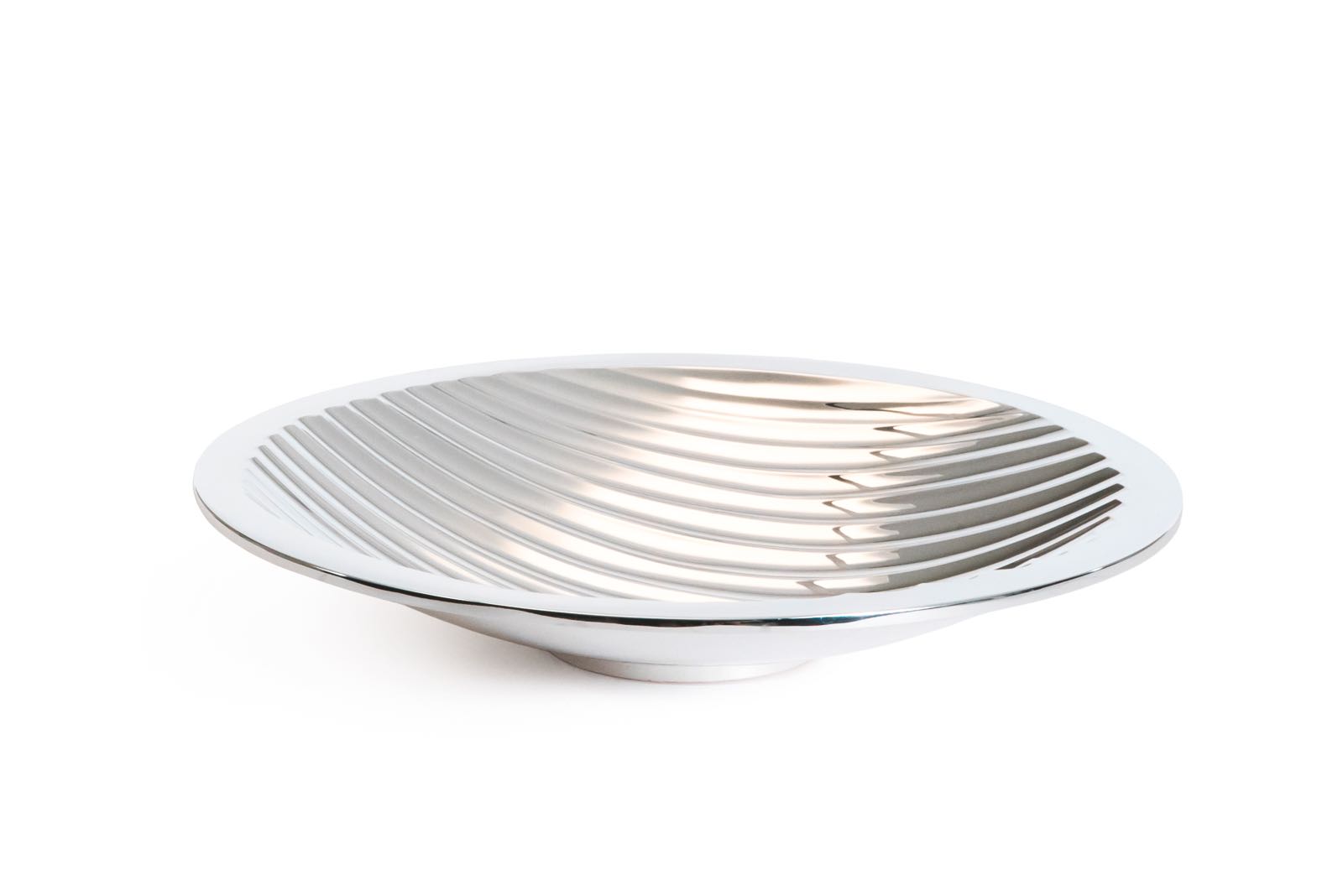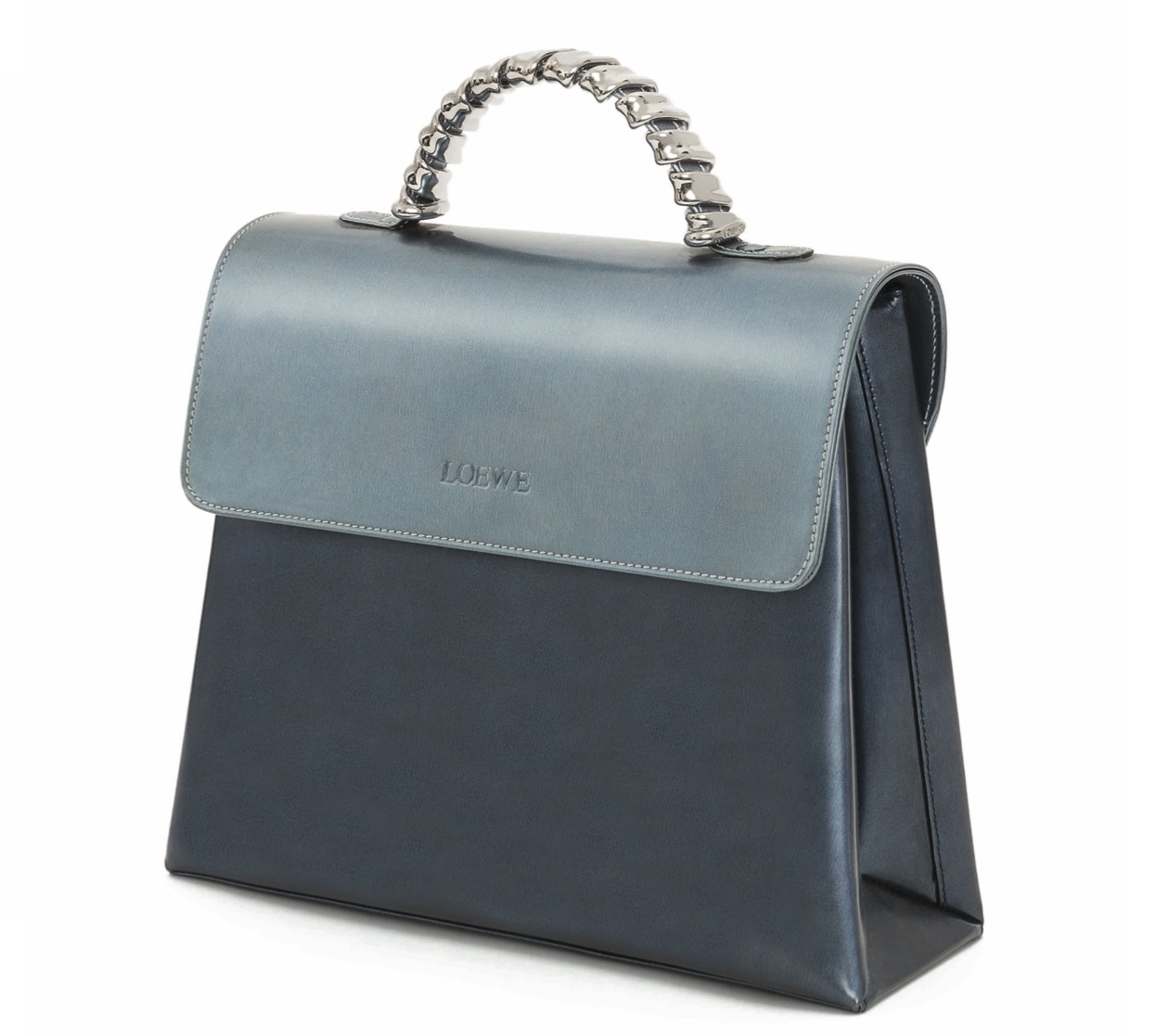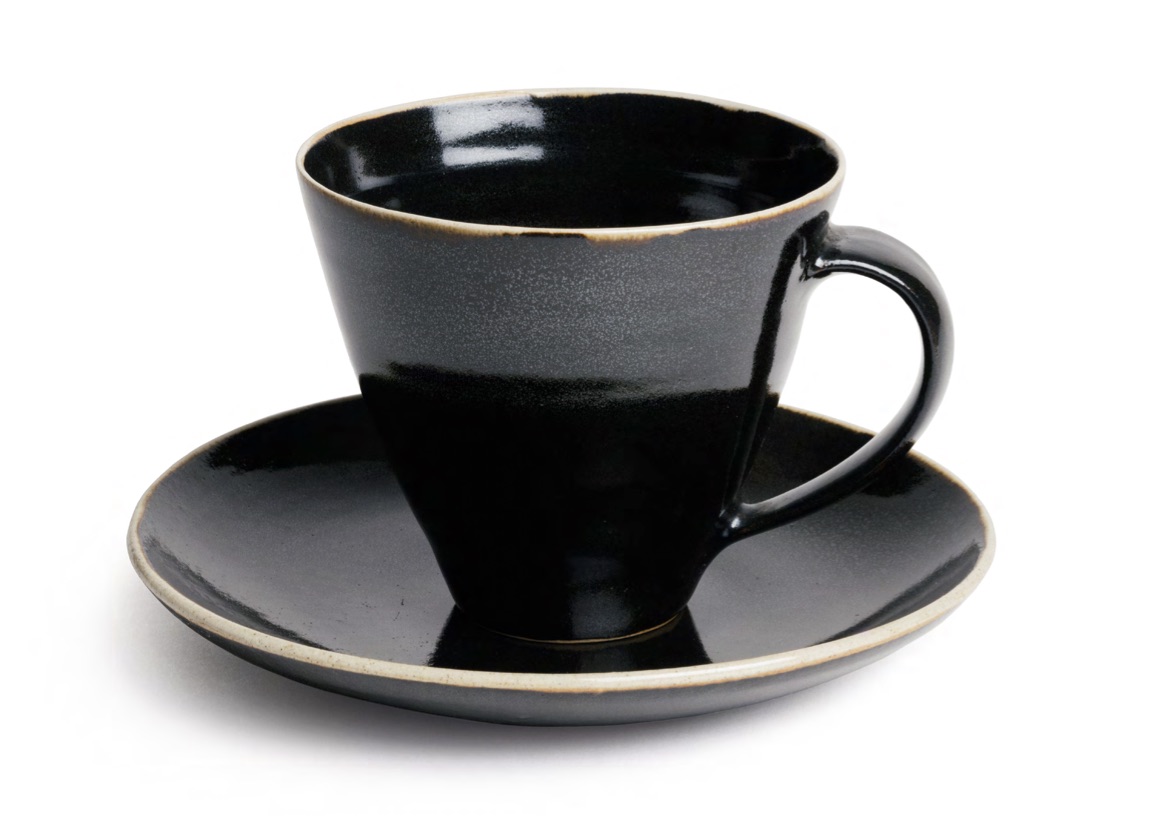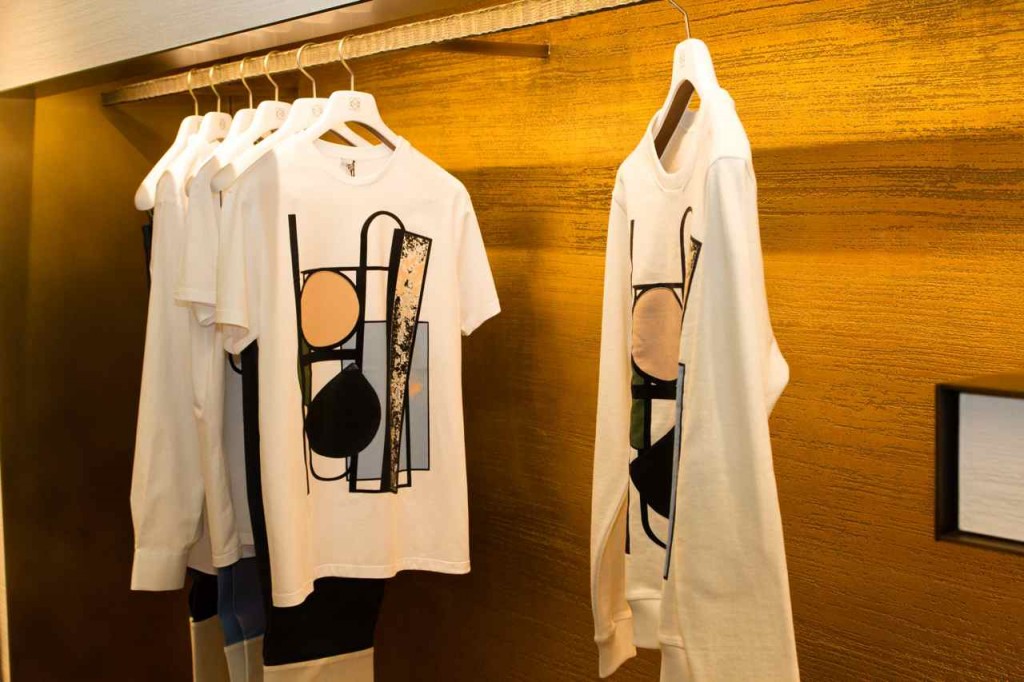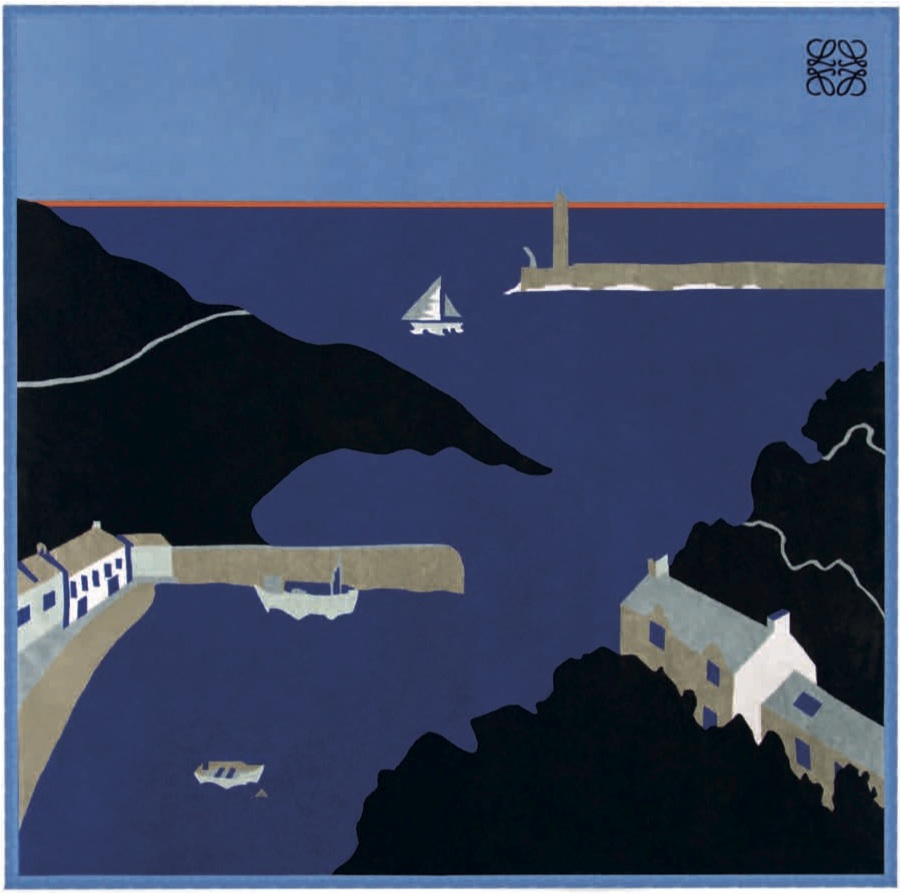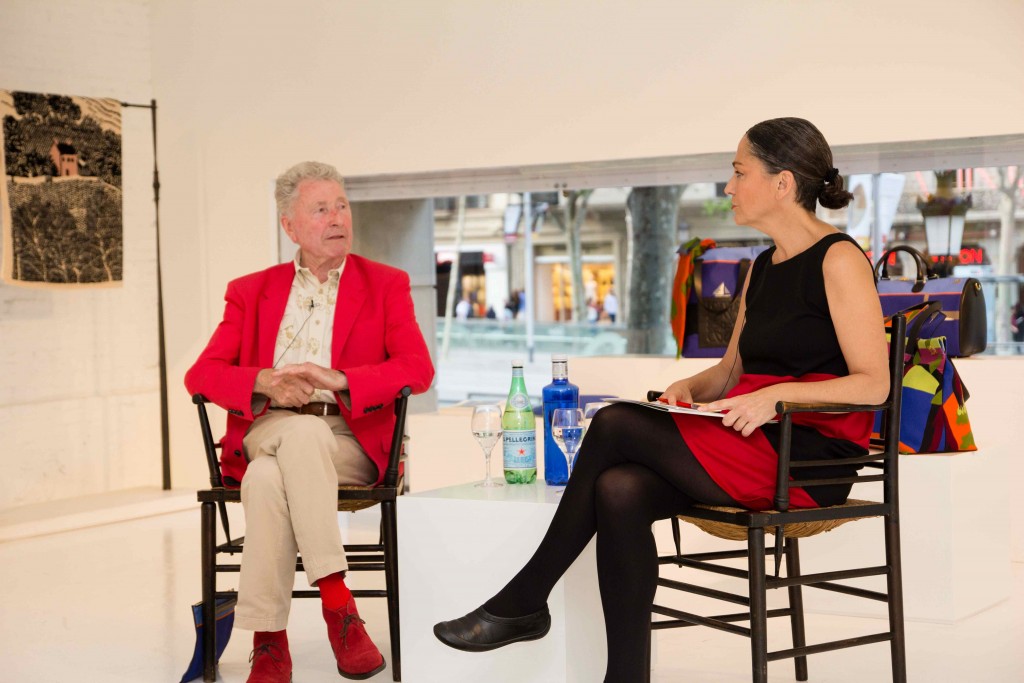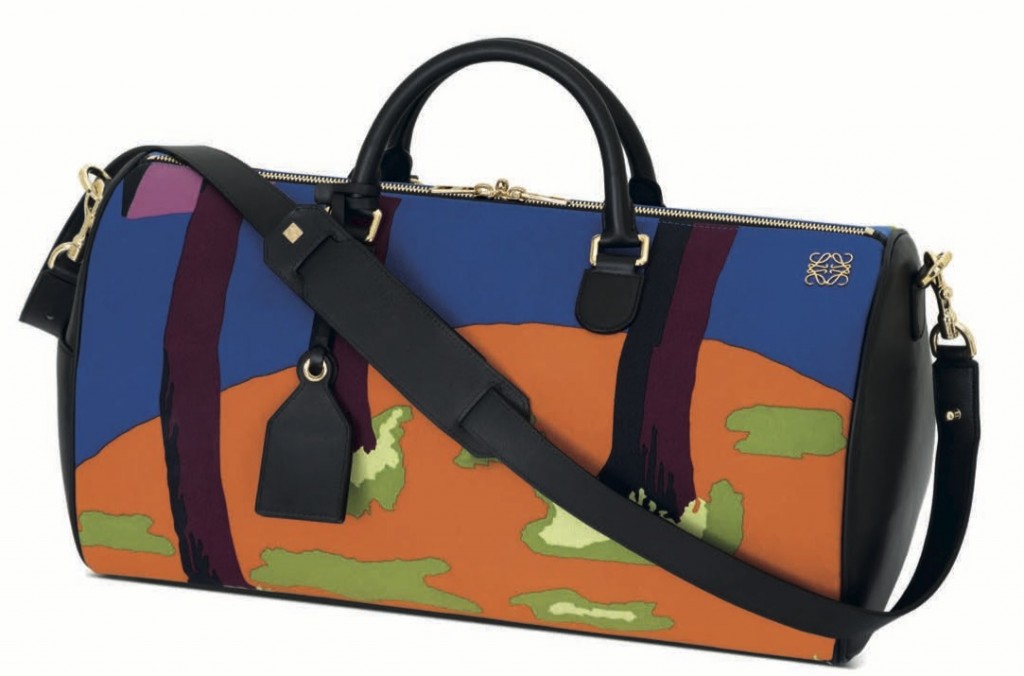Category Archives: Craft & Design
The LOEWE Craft Prize unveils the trophy
The LOEWE Craft Prize, supported by the LOEWE FOUNDATION and the leading luxury house that began as a collective of craftsmen, wishes to recognise contemporary artisans whose talent, vision and specialised skill will set a new standard for the future.
This annual award is given to the maker of an outstanding work of craftsmanship, selected in competition among entries from around the world. Since the announcement, the award has attracted numerous submissions and the attention from the international art and design community.
The LOEWE FOUNDATION now reveals the winner´s trophy designed by acclaimed British silversmith Alex Brogden, a double bowl inspired by the interaction of the elements with the earth. Brogden’s work has been exhibited internationally and is held in important collections, including that of London’s Victoria and Albert Museum.
All submitted works are required to combine an innovative application of their craft with an original artistic concept within any applied arts area, including but not limited to ceramics, jewelry, lacquer, metal, furniture, textiles and glass.
The winner, selected by a Jury of distinguished figures from the worlds of design, architecture, journalism, criticism and museum curatorship, will receive 50,000 Euros in cash and be highlighted in the ‘LOEWE Craft Prize 2017’ exhibition and catalogue, which will be on display worldwide, along with the works of the 14 finalists selected by an Experts Panel.
Competition for the prize is open to any professional artisan over the age of 18. Entries are being accepted until 7 November.
Registration, info and requirements can be found at www.loewecraftprize.com
Photographs: LOEWE Craft Prize trofeo, by Alex Brogden, 2016.
Vicente Vela at LOEWE
For more than forty years, designer Vicente Vela gave his all to LOEWE’s creative project working from his office inside the building that housed the firm’s Madrid headquarters on Serrano Street. On the ground floor of that same building, where LOEWE’s emblematic flagship store is still located today, much of his legacy to the fashion house is currently on exhibit.
Following the modernisation that LOEWE went through under the leadership of architect Javier Carvajal – who was the mastermind behind the Serrano flagship renovation in 1958, establishing what would become LOEWE’s modern stamp of “Spanishness” – Vicente Vela took that new spirit of transformation to all corners of the house. Breathing Spanish culture from his pores – he was a prominent oil on canvas painter – Vela allowed the Prado Museum, the aesthetics of hunting, and modernist Barcelona to imbue the designs of handbags, scarves, ties, decorative pieces and travel products. The colour palette of great Spanish painters came to life, reaching the streets for the first time ever and blending into a society finally ready for change and willing to be dazzled.
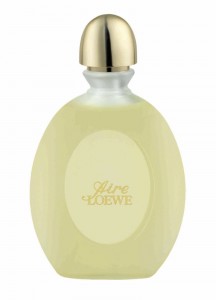 Vela is remembered most especially for creating the beautiful emblem that gave LOEWE its identity. Stamped on the house’s leather products, the famous four Ls, with their double and magical symmetry, are recognised today the world over. However, we must also remember his years of collaborative work with the great designers who worked at LOEWE during his tenure at the fashion house: Giorgio Armani, Karl Lagerfeld, Dario Rossi, Laura Biagiotti, Roger Vivier, Andrea Pfister and Renzo Zengiaro.
Vela is remembered most especially for creating the beautiful emblem that gave LOEWE its identity. Stamped on the house’s leather products, the famous four Ls, with their double and magical symmetry, are recognised today the world over. However, we must also remember his years of collaborative work with the great designers who worked at LOEWE during his tenure at the fashion house: Giorgio Armani, Karl Lagerfeld, Dario Rossi, Laura Biagiotti, Roger Vivier, Andrea Pfister and Renzo Zengiaro.
A year after his death, this exhibit showcases Vicente Vela’s universe, including his contributions to LOEWE, as well as his boundless and respectful creativity which flowed freely and unstoppable and gave the Spanish Brand its distinctive identity.
Vicente Vela at LOEWE (1958-1998). Loewe, at 26 Serrano Street. Madrid. Until 1st April 2016. [Monday to Saturday: 10 a.m. to 8:30 p.m. Sundays and Holidays: 11 a.m. to 8 p.m.
Photographs: LOEWE anagram (1970-2014), “Velázquez Collection” Bag (1991) and “Aire LOEWE” (1985) © LOEWE, 2016.
Art Basel Miami, ´Chance Encounters´in Loewe
The LOEWE FOUNDATION participates for the first time in Art Basel Miami with ´Chance Encounters´, a project curated by LOEWE´s Creative Director Jonathan Anderson, at the LOEWE Miami Design District store.
´Chance Encounters´ brings together the works of four major historical and contemporary British artists. Potter Lucie Rie (1902-1995) created ceramics with delicate lines and an extreme refined functionality. Her work stands as the heart of the exhibition, and is surrounded by the photographs taken by painter Paul Nash (1889-1946), the large paintings by Rose Wylie (1934) and sculptures by Anthea Hamilton (1978).
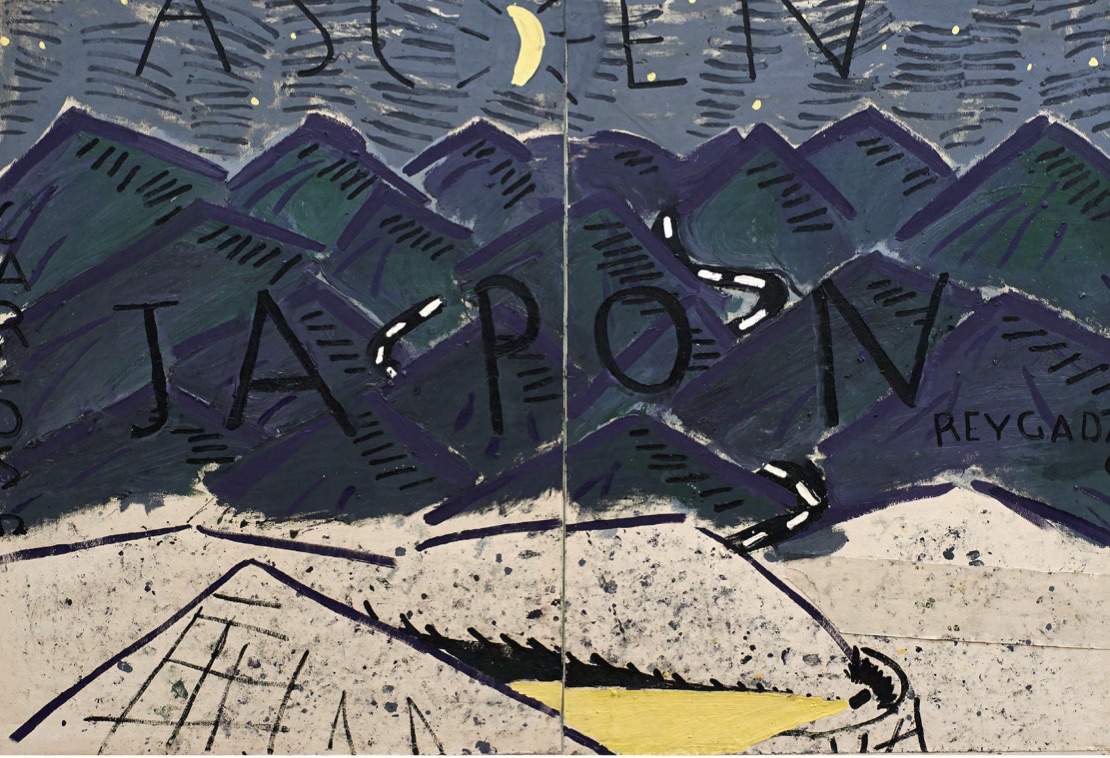
‘When I first conceived the idea of the LOEWE store in Miami, I wanted to create an environment in which to bring Spanish history and craft into a modern context. My ultimate goal with LOEWE and the LOEWE FOUNDATION, is to create dialogues with art, craft and other creative fields. This exhibition is a personal snapshot of single moment, bringing together things that have recently lodged in my mind and shaped my thinking. For me art is a lens through which to examine the current moment.’ Creative Director, Jonathan Anderson.
The exhibition has been conceived around the 18th century granary building which LOEWE had transported to the Miami store from a small town on the border between Galicia and Portugal, a perfect marriage of tradition and craftsmanship.
´Chance Encounters´. LOEWE Miami Design District, from 2nd December 2015 to 17th January 2016.
Photographs: Lucie Rie y Hans Coper. Stoneware cup and saucer, ca. 1946-1959. LOEWE Miami Design District. Rose Wylie. Japon Driving, Oil on canvas, 2009.
Brooches of Ramón Puig Cuyàs in Barcelona
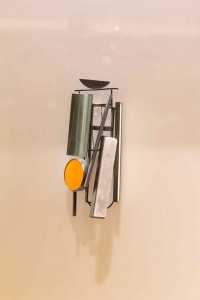 Jeweler Ramón Puig Cuyàs, accompanied by art critic and historian Daniel Giralt-Miracle, participated in the LOEWE Talk “The human factor in current creation” that took place last week in Loewe Barcelona. This store now houses Ramón Puig´s brooches, fostering a unique opportunity to admire and learn about the work of the Spanish jeweler and his link with the new LOEWE collection.
Jeweler Ramón Puig Cuyàs, accompanied by art critic and historian Daniel Giralt-Miracle, participated in the LOEWE Talk “The human factor in current creation” that took place last week in Loewe Barcelona. This store now houses Ramón Puig´s brooches, fostering a unique opportunity to admire and learn about the work of the Spanish jeweler and his link with the new LOEWE collection.
Ramón Puig explained that from the very beginning he has tried to “make jewelry that would appeal to people who do not like jewelry”. “The value of materials”, so important in this field, is not a priority for him. He believes in modernising jewelry which means “connecting the pieces with their origin, with their symbolism, and avoiding ostentation”. A true artistic “creation is the act of doing it all by yourself, of participating in the whole process”, and “doing things well really makes you happy”.
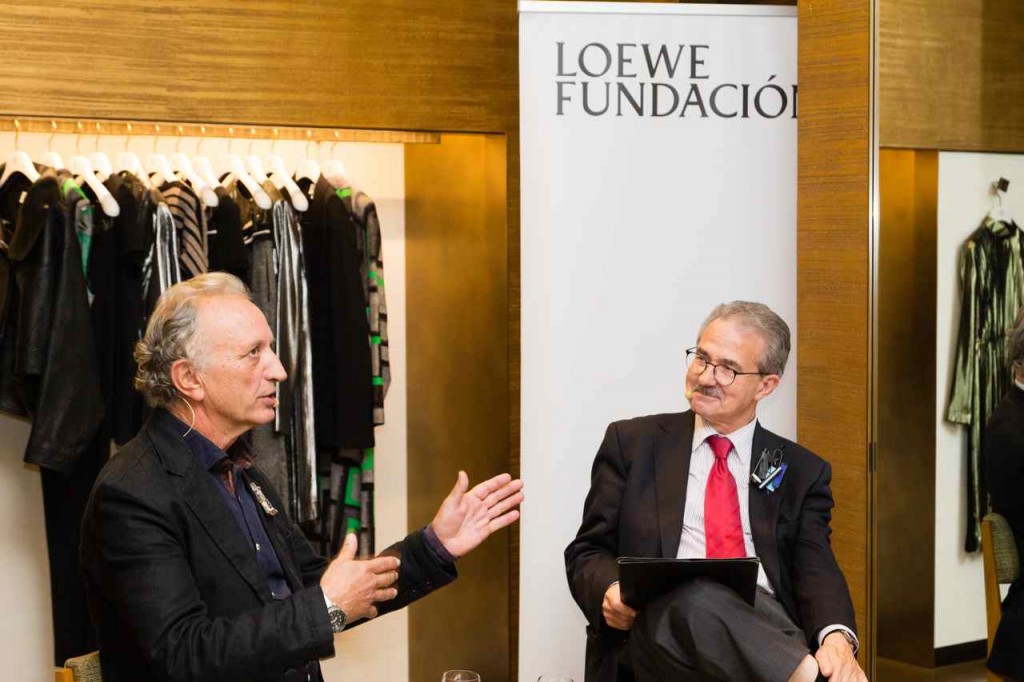
The jeweler says that “reviewing the past to build the future is key”. He insisted that “in order to transform something we must be aware of where we come from” and he defended the idea of ”recovering old traditions by inserting them in different time frames”.
That was precisely the goal of Jonathan Anderson in his collection created from these jewels. T-shirts feature abstract prints inspired by the work of Ramón Puig Cuyàs, a perfect metaphor for LOEWE’s creative spirit and philosophy.
Exhibition of brooches by Ramón Puig Cuyàs, throughout October 18 at the LOEWE Store in Paseo de Gracia, 35, Barcelona.
Photographs: Ramón Puig Cuyàs and Daniel Giralt-Miracle, brooch by Puig Cuyàs and T-shirt from the LOEWE Fall Winter Men’s Collection 2015 © Poncho Paradela for LOEWE, 2015.
John Allen, the emotion of colours
The wise and relaxed conversation between John Allen and journalist Anatxu Zabalbeascoa -leading the LOEWE Talks titled A bag is a landscape– inundated recently the emblematic LOEWE store in Gran Vía, Madrid, and the Galería LOEWE in Barcelona. Using the patterns previously created by British knitter and master weaver John Allen, Jonathan Anderson -LOEWE’s Creative Director- has designed a new collection. Allen’s flat drawings -created to be hung on the walls, as carpets- have developed into accessories. “I couldn’t imagine my designs as three-dimmensional objects”, said Allen. Besides beach towels and totes, Allen’s colours have reached wallets, key-rings or espadrilles. The John Allen Collection, with British landscapes drifting towards abstraction, reveal the understanding between Allen and Anderson. “We trusted each other”, explains Allen. “It was like giving him my baby”.
Designer, craftsman, weaver… Allen does not care what other people call him. “I see myself as an artist, but that could seem very pretentious. I generate ideas for others”, he insists with remarkable humbleness. Moreover, he gets inspired “from everything” but his main creative source is colour. “Colours make me emotional, it´s about pushing boundaries”, he says. But as an artistic tool, explains Allen, “colour cannot be taught, we cannot learn to enjoy colours”. Allen has taught at the Royal College of Art, whose knitting department he also founded, until his retirement in 1989.
John Allen is an expert in reinventing himself, and he admits to keep certain “freshness” towards his work, perhaps emphasised by “having been working with younger people for so long”. “People never chase, never move on”, he complains. “I am somebody whose attitude has changed over the years. I am a man of the future”. When Zabalbeascoa asked him how we will perceive this collection in the next years, Allen was lost in thought, as if thinking ahead. Then he smiled and said: “I think it will age quite well”. Among all his works, Falling Leaves is “my favourite design I have ever done”. That’s why he carries his bag everywhere, because -he laughs- everytime somebody stops and says, ‘Oh! Where is that great bag from?’”.
Photographs: Cornish Harbour beach towel and canvas Falling Leaves duffle, John Allen Collection Spring Summer 2015 © LOEWE, 2015. LOEWE Talks A bag is a landscape with John Allen and Anatxu Zabalbeascoa at Galería LOEWE in Barcelona © Yolanda Muelas for LOEWE, 2015.
The Human Factor In Artistic Jewellery
“The best objects are those made by craftsmen who have taken pleasure in creating them.” This was written over a century ago by William Morris, the Arts & Crafts ideological British designer, and adopted by Barcelona-born jeweller Ramón Puig Cuyàs (1953). The goldsmith’s brooches can be admired in Madrid, in Loewe’s 26 Serrano Street store until the end of April. The ideas that make these “timeless pieces always seem new” – to quote Jonathan Anderson, the brand’s Artistic Director – were discussed by the jeweller himself last Thursday in the legendary Madrid Gran Via store.
 The fact that an idea that is almost as old as Loewe’s first store –the location chosen by the Loewe Foundation to organise this second conversation- should still be current, summarises what the brand and the goldsmith were trying to transmit. The dialogue “The human factor in today’s creations” was, in fact, a live interview (journalist Anatxu Zabalbeascoa posed the questions) and a plea in favour of “creation with content” like the work produced by the Catalan goldsmith, who thanks to Anderson’s keen eye, was discovered by almost everyone in the audience.
The fact that an idea that is almost as old as Loewe’s first store –the location chosen by the Loewe Foundation to organise this second conversation- should still be current, summarises what the brand and the goldsmith were trying to transmit. The dialogue “The human factor in today’s creations” was, in fact, a live interview (journalist Anatxu Zabalbeascoa posed the questions) and a plea in favour of “creation with content” like the work produced by the Catalan goldsmith, who thanks to Anderson’s keen eye, was discovered by almost everyone in the audience.
Puig Cuyàs corroborated that it is only when one knows the past that one may form the necessary criteria to look to the future. The jeweller discussed the non-conformist component of jewellery, remembering that in the aftermath of the Spanish Civil War it was artisans who tried new materials, not only because they lacked resources, but also to disassociate themselves from the so-called “ jewels of the black market”. As a direct consequence, and as would later also occur after World War II, a jewel was no longer about the precious metals it was made out of, but rather about artistic creation. That was how Puig identified the difference between jewels with material value, “designer” jewellery, and the few pieces that seek “to give shape to the occult” and that consequently traipse the quicksand that leads to art.
We are the society that has amassed the largest number of objects. Also the one that feels the least attached to its possessions. As such, we have lost the memories associated with our belongings. In addition to being unsustainable, this situation shows us in a very unfavourable light. For that reason, when facing the challenge of digitalisation – and the inevitable and ongoing disappearance of the numerous objects that technology has done away with – Ramón Puig Cuyàs spoke in favour of the fundamental –and not anecdotal- importance of the ornament as imprint, memory and creation.
What Jonathan Anderson wanted to showcase, Loewe’s cultural heritage, Puig summarised as honesty, authority and truth applied to any creation. This belief in the importance of the content allowed the jeweller to defend imperfection as a personal and never ending vocabulary, as opposed to the almost mathematical language of perfection. We may draw from another Arts & Crafts artist to summarise the dialogue of opposites (chaos and order, serious and entertaining, heavy and light) captured in Puig’s latest brooches. “There is hope in honest error. None in icy perfection.” These words were coined by the architect Charles R. Mackintosh, but they could very well have been first pronounced by Puig, who closed by defending the power of his brooches as “gender-free ornaments able to broaden identities.”
Jewells that break down barriers, brooches that need the body as a frame, or as a pedestal; useful art and creation with substance. All this is can be seen in the collection of brooches that summarise the work that goldsmith and painter Ramón Puig Cuyàs has produced over the past 40 years. This was explained during the second conversation organised by the Loewe Foundation. Jewellery as art and the brooch as a vehicle that broadens one’s identity.
Photographs: Loewe Talks, Ramón Puig Cuyàs y Anatxu Zabalbeascoa at the Loewe Store in Gran Vía, Madrid. Brooches, Ramón Puig Cuyàs. Until the end of April 2015 [Monday to Saturday: 10:00 a.m. to 8:30 p.m. Sundays and holidays: 11:00 a.m. to 8:00 p.m.]


